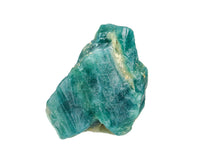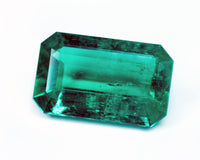- 1. January birthstone
- 2. The History of January Birthstone, garnet
- 3. Properties of the January Birthstone
- 4. Varieties of Garnet
- 4-1. Pyralspite
- 4-2. Pyropet
- 4-3. Almandine
- 4-4. Rhodolite
- 4-5. Spessartine
- 4-6. Malaia Garnet
- 4-7. Ugrandite Garnet
- 4-8. Uvarovite
- 4-9. Grossular
- 5. January birthstone for Sale
January birthstone
Winter means long dark nights and snow-covered streets. Perhaps that is why the coldest month of the year should be associated with a fiery and passionate gemstone. Indeed, January birthstone, garnet resembles the sun rolling behind the horizon, it is red and lit from within. In addition to its impressive appearance, the stone is able to positively affect those born in the first month of the year, that is, Capricorns and Aquarius. The beauty of the red gem is undoubtedly mesmerizing; this is the reason why it has been adorning jewelry for more than two millennia.
The History of January Birthstone, garnet
Garnet, the January birthstone, is a symbol of love and fidelity. Jewelry inlaid with this jewel was widespread among the Greeks, Scythians, Persians, and Romans. In ancient
Garnet embellished (and still do!) talismans, love tokens, rings, earrings, headdresses, military armor, and court clothes. They were admired and even mentioned in the literature, for example, in "The Adventure of the Blue Carbuncle" by Arthur Conan Doyle. Ironically, carbuncle can’t be blue. Some of the varieties of garnet exist in blue but they are fairly rare.
The term garnet was coined in 1270 by the medieval alchemist Albert Magnus. He noticed that the dark red crystals of the stone resembled the grains of the Phoenician apple, i.e. pomegranate. Garnet is a distorted Latin word ‘granum’ meaning a grain.
Garnet, January birthstone for Jewelry making
Properties of the January Birthstone
January birthstone, garnet is a gem of medium hardness. On the Mohs scale representing the hardness of minerals, it gains 6.5-7.5 points. Since the stone is not the hardest, you should store it separately from diamonds, topaz, and other gems. Otherwise, harder gems may scratch it. The most scratch-resistant types of the gem are pyrope and almandine. It comes as no surprise that they are jewelers’ favorites.
Garnets are known for their pyroelectric properties. If you rub the stone well enough, it will start attracting fluff, hair, and light stuff. Combined with a vibrant unearthly appearance, this ‘magic’ forged a reputation of a mysterious stone.
Since garnet is not just a single gem but a whole family of minerals, it amazes with the richness of colors and properties. Let's take a close look at two large groups of garnets that differ in their chemical composition and look.
January birthstone: Varieties of Garnet
There are two large groups of garnets: pyralspites and ugrandites.
>PyralspiteThese garnets feature aluminum in their chemical composition. Predominantly, all these garnets are red, which explains the name pyralspite – the Greek word "Pyr" means fire. Only pyralspite garnets are able to exhibit the effects of asterism (a six-pointed star) and cat’s eye (a shimmering stripe resembling an eye of a predator).
Pyrope
Pyropes are perhaps the most beautiful of all red garnet. In the past, these fiery gemstones were called Bohemian ruby (after the Bohemian region in the
Almandine
Almandines are the most common gemstone garnet. Almandine is a distorted name of the Alabanda area in
Rhodolite
These garnets are an isomorphous blend of pyrope and almandine. They are available in colors from light red to purplish pink. Rhodolites are mined in the
Spessartine
These garnets got their name from the Spessart plateau in
Malaia Garnet
Discovered in
Ugrandite Garnet
The second large group of garnets has calcium in its composition. Below, are some of the best-known varieties of ugrandite garnet
Uvarovite
Uvarovite is an emerald green garnet. It was named after Count S.S. Uvarov, the President of the St. Petersburg Academy of Sciences. Uvarovites are typically small (1-
Grossular
These garnets got their name because of their statement green color resembling gooseberries – the Latin word for these berries is grossularia. Green crystals are rarely transparent; that’s why they are less common in jewelry. On the other hand, light green, yellowish, and orange grossulars are clear. The most valuable light green grossular is mined in
Grossulars offer a few varieties:
- Ttsavorite was named after the Tsavo National Park on the border of Tanzania and Kenya. Due to its rarity combined with a marketing strategy of Tiffany &
- Hydrogrossular is either opaque or translucent garnet of the following colors: white, pinkish, bright green, and dark green with yellowish tints.
- Hessonite – its name comes from the Greek word ‘gasson’ that means inferior. Sometimes it is called cinnamon stone. It is available in honey-yellow, honey-orange, brown, brown-red, yellow, orange, and red colors.
- Andradite - this garnet was named after the Portuguese mineralogist Jose Bonifacio de Andrade e Silva. Andradite itself is not very popular as a gemstone but its varieties are of a strong interest in jewelry-making.
- Demantoid is highly valued for its diamond-like sheen. It exists in emerald green, bright green, yellow, pistachio, and olive colors. Sometimes, demantoids have needle-looking inclusions (byssolite fibers) giving them even more charm.
- Topazolite is a clear variety of andradite. It got its name because of its similarity with topaz. Its colors are yellow, honey, and golden.
- Melanitis is black andradite containing titanium. Its name is a derivative from the Greek ‘molasses’ standing for black.
Garnet, January birthstone for sale
January birthstone for Sale
January birthstone, garnet is an indisputably beautiful and charming gemstone. Those who were born in the beginning of the year can reap many benefits of owning a garnet stone. Besides its undisputable aesthetical values, it is prized for its healing and magical properties. Whether you’re on the hunt for a spectacular amulet or statement stone for your hand-made jewelry, we’ve got you covered. KenKenGems delivers a plentitude of alluring garnet in strands and loose, set in precious metals as well as one-of-a-kind large crystals. Make sure to check out our catalog for a great selection of January birthstones.








